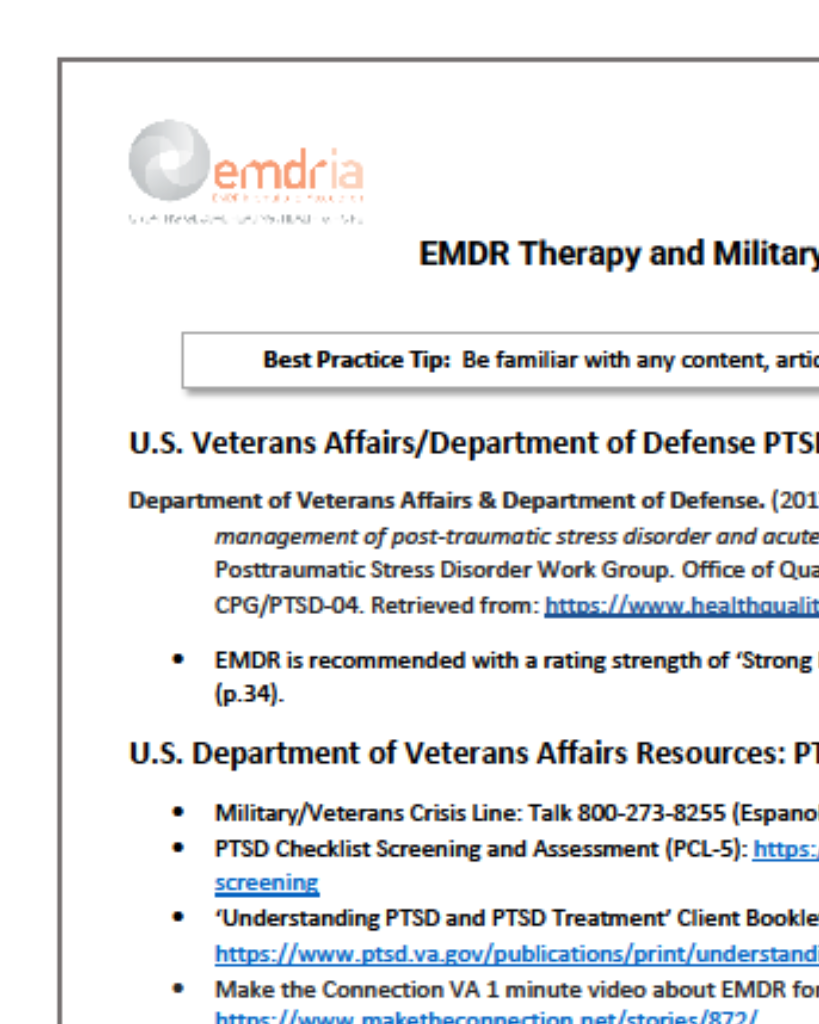Treating traumatic amputation-related phantom limb pain: A case study utilizing eye movement desensitization and reprocessing (EMDR) within the armed services
Four sessions of EMDR led to elimination of phantom limb pain and a significant reduction in PTSD for one combat veteran.
Article Abstract
“Since September 2006, more than 725 service members from the global war on terrorism have survived combat-related traumatic amputations that often result in phantom limb pain (PLP) syndrome. Combat amputees are also at high risk of developing chronic mental health conditions such as posttraumatic stress disorder (PTSD) and clinical depression as they deal with wartime experiences, rehabilitation, and postrehabilitation adjustments. One active-duty patient was referred to a military outpatient clinic for treatment of PLP and PTSD following a traumatic leg amputation from a noncombat-related motor vehicle accident. Four sessions of eye movement desensitization and reprocessing (EMDR) led to elimination of PLP and a significant reduction in PTSD, depression, and phantom limb tingling sensations. A detailed account of this treatment, as well as a review of the benefits of EMDR research and treatment in the military, is provided. The results are promising but in need of further research.”
—Description from publisher
Article Access
Purchase/Subscription Required
Russell, M. (2008). Treating traumatic amputation-related phantom limb pain: A case study utilizing eye movement desensitization and reprocessing (EMDR) within the armed services. Clinical Case Studies. 7(2), 136-153. https://doi.org/10.1177/1534650107306292
Date
April 1, 2008
Creator(s)
Mark C. Russell
Client Population
Military/Veterans
Extent
18 pages
Publisher
SAGE Publications
Rights
Copyright © 2008, © SAGE Publications
APA Citation
Russell, M. (2008). Treating traumatic amputation-related phantom limb pain: A case study utilizing eye movement desensitization and reprocessing (EMDR) within the armed services. Clinical Case Studies. 7(2), 136-153. https://doi.org/10.1177/1534650107306292
Audience
EMDR Therapists, Other Mental Health Professionals
Language
English
Content Type
Article, Peer-Reviewed
Access Type
External Resource





